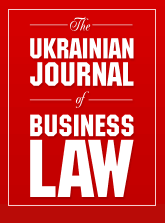I hile the Ukrainian Parliament continues heated debates over the open market for agricultural land, one thing remains clear - the lifting of the moratorium on sale of agricultural land is an inevitable process, which is largely driven by globalization and the expansion of influence of major world corporate groups in Ukraine. However, for the land market and agribusiness to become transparent and efficient, the relevant risk management systems have to be implemented. Agricultural insurance is one of the possible options to hedge pertinent agricultural risks along with the development of transparent financing instruments in agriculture, thereby fostering growth and development of the Ukrainian land market. This article covers basic existing regulations, their use at national level, relevant implementation issues, international practices and ways to tackle them in agro-insurance policy-making.
The Ukrainian regulatory framework for insurance in agriculture is relatively new, where back in 2012, Ukraine established a Law On the Specifics for Insurance of Agricultural Products with State Aid (the Law). The Law established general mechanisms on reimbursement of insurance premiums for certain agricultural products to eligible agricultural producers with regard to the loss of their livestock and/or crops due to occurrence of unfavorable climate and weather events. Furthermore, the Law outlined the framework for the insurance market for agricultural products, which is effectuated through a so-called agrarian pool, an independent NGO consisting of various insurance companies (currently, only 4 insurance companies participate in the program). The membership in the agrarian pool is the prerequisite for conducting insurance in the agrarian sector with subsidized state aid for agrarian producers. Crop and livestock insurance is de facto voluntary because the Government does not subsidize all premiums under the mandatory programs, mainly because some farmers do not apply for subsidies, given the cumbersome procedure. In practice, private insurance companies sell agricultural insurance under their property license while separate licenses for mandatory crop and livestock insurance are required. Financial institutions require an insurance policy for crops or livestock offered as collateral but finance institutions themselves stimulate the issuance of formal insurance policies with low premium rates and extremely limited coverage. Private and international reinsurance in agriculture is available in Ukraine, while the Government does not provide any state reinsurance programs. In practice, the private insurance companies involved in agriculture insurance experience limited access to international reinsurance markets for crop and livestock insurance products. Therefore, Ukrainian private insurance companies reinsure the relevant agricultural risks mostly on the regional reinsurance market.
It might be arguable but the existing agricultural legislative model in Ukraine appears to generate corruption risks since state subsidies are inconsistent and biased, while the insurance pool consists of only four private insurance companies. The situation in a non-subsidized insurance market looks more promising, with about 15 insurance companies competing in this segment. This market generated approximately UAH 5.809 billion worth of insurance premiums in 2016 (46.3% more compared to 2015) as regards insurance of agriculture products, which reveals moderate optimism towards market growth. However, from a regulatory perspective, agricultural insurance is not considered as sufficient collateral coverage for an agricultural business when attracting loans, while in developed markets it is considered as an alternative to the pledging of agricultural land plots.
As of today, Ukrainian state guarantees coverage of 50% insurance premiums for agriproducers, if they insure the relevant risks with insurance companies, members of the agrarian insurance pool and then follow routine and burdensome procedure for premium recovery. In practice however, the state fails or largely limits its subsidies to Ukrainian agricultural producers on insurance products depending on the budgetary constraints in a particular fiscal year. All the noted factors and above regulatory inconsistencies have an adverse effect on the investment attractiveness of Ukrainian agrarian sector, its long-term financing and creditworthiness, becoming a limitation for an open and transparent land market.
In Germany, for instance, there are no agriculture insurance premiums subsidies, which are normally considered as distorting market conditions, which limit the capacity of the competitive insurance market to unwind. In other developed economies (including major agricultural EU countries like the Netherlands, France, Hungary, Poland), Governments aim to either partially subsidize the crops and livestock insurance premiums or significantly reduce their application over time. Unlike major developed countries, US regulations provide for various crop and livestock insurance premiums recovery programs, which range from 13% to 85%. Based on the analysis of the legislative setting of major world agricultural countries, the long term sustainable growth of farming land market is largely dependent and correlated with the existence of the following: a) a developed insurance infrastructure; b) ease of access to international reinsurance hubs; c) private-public partnerships in agricultural insurance; d) targeted insurance premium subsidies.
The developed insurance infrastructure stands for sound and reliable database relating to agriculture risk events (empirical data over significant time lapse), ability of the Government or other institutions to collect and maintain information on agriculture products, crops and livestock, weather conditions attributable to relevant land plots and areas. Access to the major international reinsurance hubs provides for an opportunity to diversify systematic risk, shifting it among various market participants worldwide, enabling the reduction of pricing on agriculture insurance products locally. Private-public partnerships are justified when the private insurance market is weak (similar to Ukraine) and unable to handle risk efficiently. In the latter case, Government intervention would complement the capacity of private reinsurance (such examples exist in Kazakhstan, Mexico, and Spain) and the Government can act as the sole reinsurer. Targeted subsidies are necessary to make agricultural insurance products "tailored" to a specific agriculture producer, making them cost-efficient and customized to the size of the farming business.
As can be seen from the above best practices and trends around the world, the Ukrainian agricultural insurance market is relatively young and lacks certain regulatory framework, which can boost sustainable crop harvesting and livestock breeding, as well as development of a civilized land market in Ukraine.
To overcome these challenges, the Ukrainian Government should aim to develop agricultural insurance infrastructure first by setting up data-driven tools, which would enable the collection and publicizing of data for the development and promotion of relevant agroinsurance products. The latter would eventually give the required data for actuarial statistics over a significant time span (e.g. no less than 10 years), which is the core basis for cost and pricing of the relevant insurance products. It would also allow private insurance companies to reduce their cost of developing the relevant insurance products and would grant equal access to all insurance companies and foster relevant industry growth. Given significant Ukrainian budget issues and the above trends in developed countries, Ukraine should also refrain from subsidizing agricultural producers. The primary role of Government should be to address market and regulatory imperfections in order to encourage participation by the private insurance sector. The Government should focus mainly on developing the risk market infrastructure, such as a strong and enabling regulatory framework, public awareness campaigns, data collection and management.
On the financing side, the Ukrainian Government could launch an initiative recognizing the agricultural insurance as sufficient instrument for Ukrainian banking institutions to grant loans to Ukrainian agribusinesses. Such initiatives may serve as a viable alternative to state subsidies or partial recovery of interest payments under the loans provided to Ukrainian farming businesses, whose financing has become even more scarce and ineffective over the last few years.










